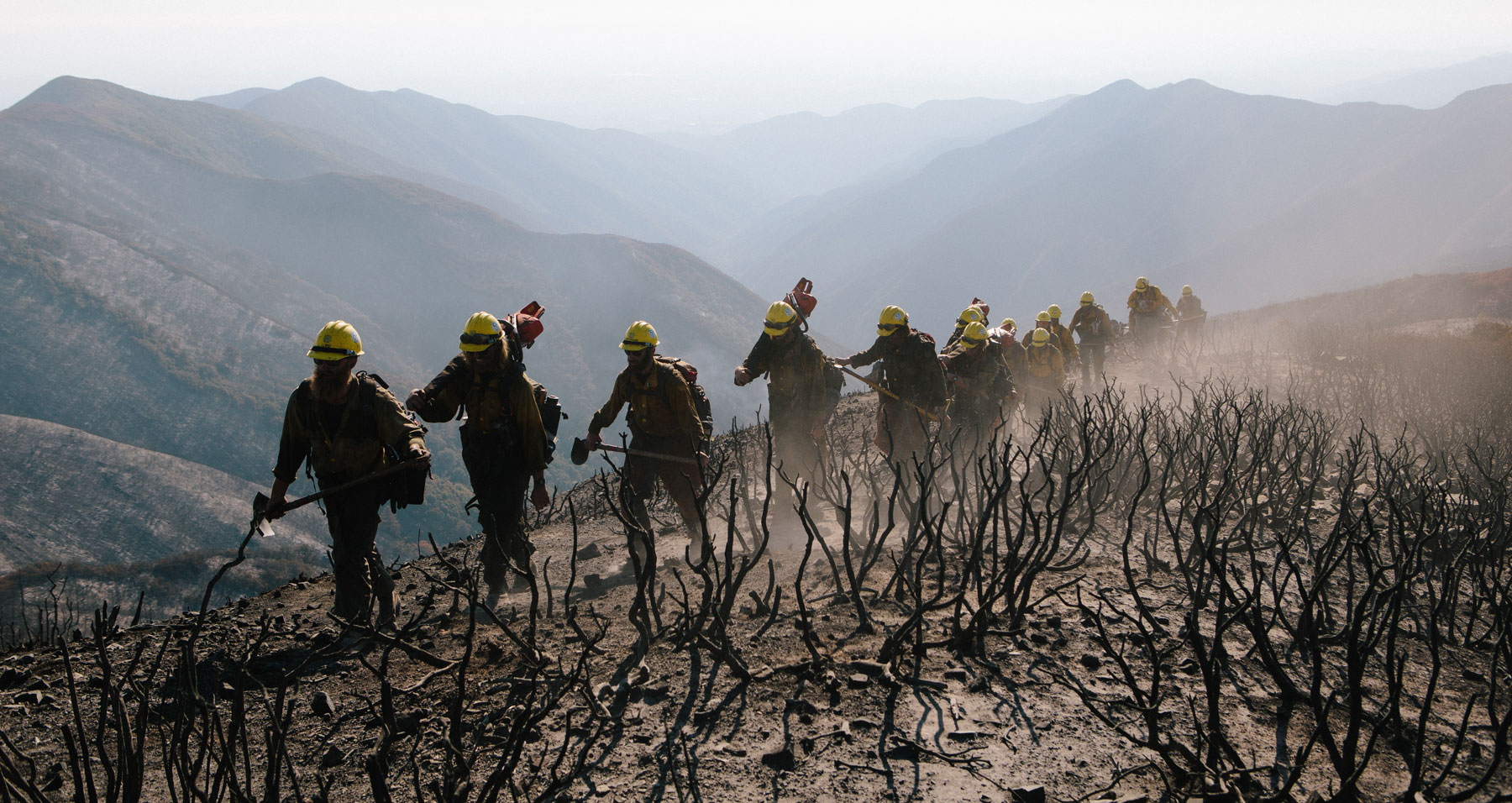
MEET CREW 7
Get to know 20 exceptional california wildland firefighters—many of whom are CSU students and alumni—working hard to stop wildfires and save communities.
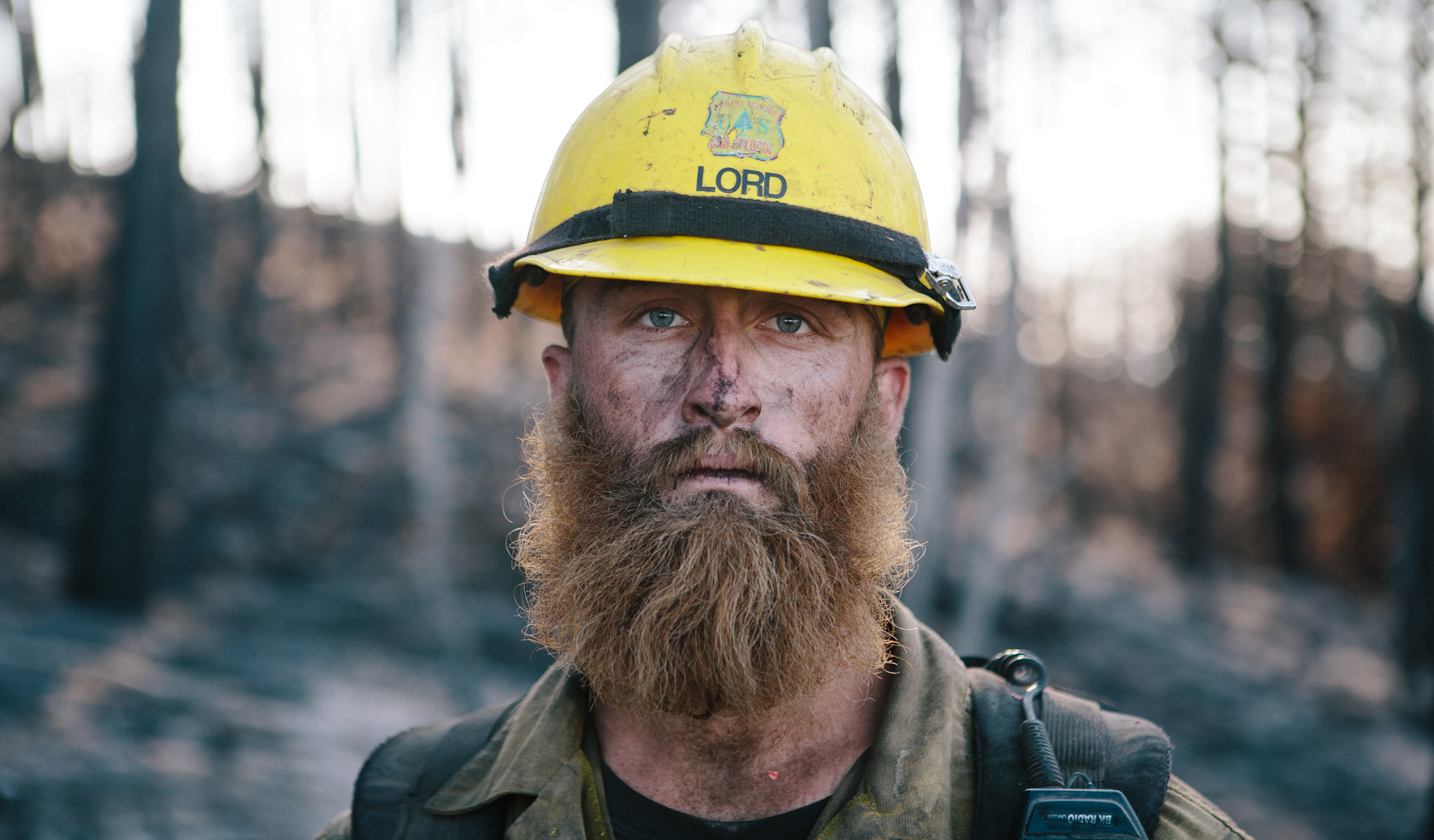
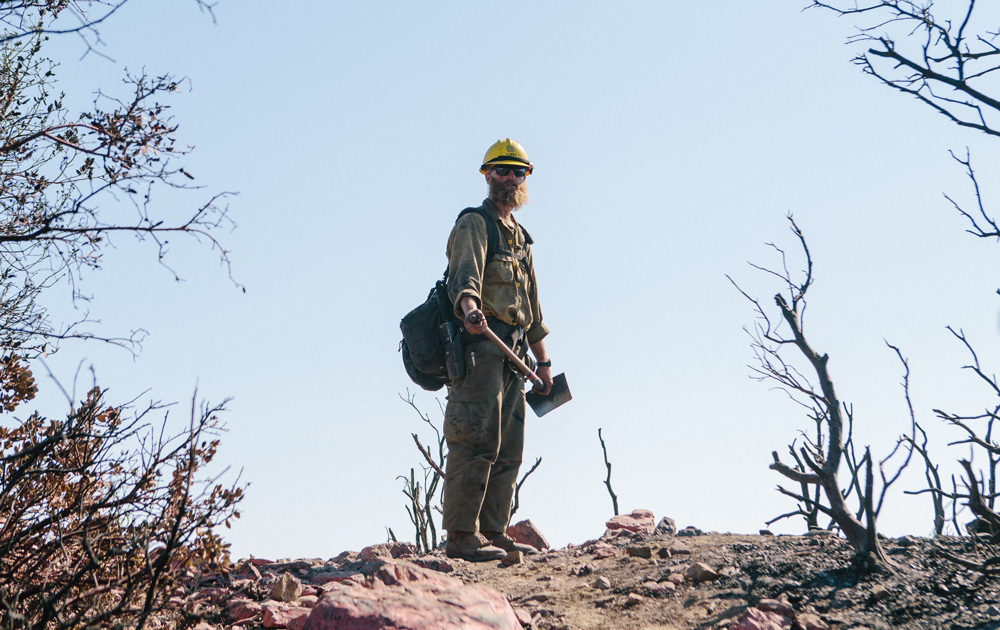
Austin Lord, who earned his bachelor's in forestry and natural resources from Cal Poly San Luis Obispo, says that the best days on the job are those he spends simply being in a beautiful place, doing challenging, meaningful work.
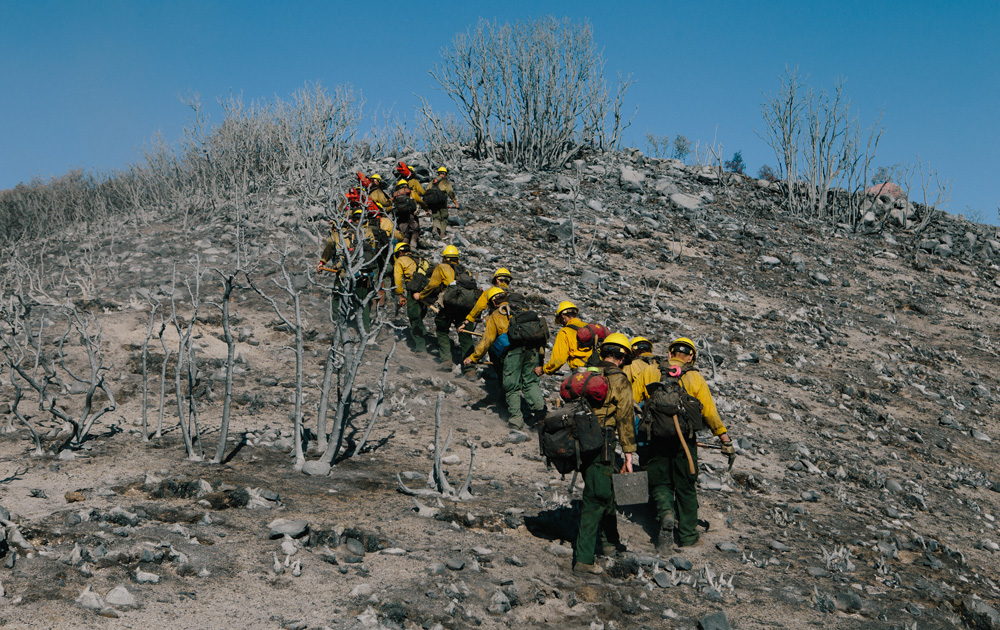
Many students from Cal Poly and other colleges have joined Crew 7 to gain vital hands-on experience. After graduation, some go on to work in fire management positions in state or federal agencies such as CAL FIRE or the U.S. Forest Service.
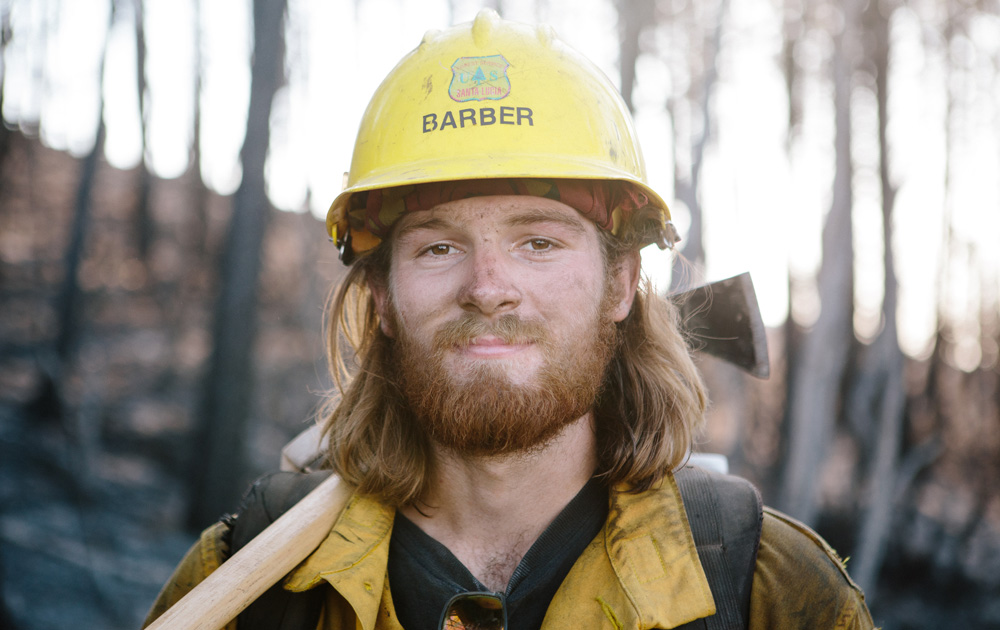
ZACHARY BARBER
Student, Cal Poly SLO
Second Firefighting Season
Best day: In September 2018, we were dispatched to a fire at a ranch located very deep in the Santa Barbara backcountry. We drove for 2.5 hours off Highway 154, down insanely sketchy dirt roads to access this fire. As we crested a ridge at about sunset, we had a ridgetop view of the
Ogilvy Fire. Shortly after, we saw smokejumpers jumping out of their airplanes to parachute into the fire. That's how remote this fire was. We worked until 1 a.m. cutting
direct line right behind the jumpers we had just seen fall from the sky.

REUBEN BRAND
Student, Cal Poly SLO
14th Firefighting Season
Best day: In 2010, my crew, Salmon
Helitack, was called to Jackson, Wyoming, to assist with a prescribed burn designed to enhance the habitat for Rocky Mountain elk herds in parts of Grand Teton National Park. We used drip torches along a trail to create a
black line for the
helitorch to come in behind us. Our burn reduced the dense stands of lodgepole pine and subalpine fir to allow for quaking aspen to regenerate and provide forage for the elk. We covered several miles of fireline that day and the total acres burned was over 2,000.

BRIAN CLARK
Alumnus and graduate student, Cal Poly SLO (’18)
Third Firefighting Season
Best day: My favorite day this season was on the
Holy Fire when we were cutting a direct fireline. While making our way through the cut, my saw team got bumped down the line to mitigate some garden vegetation that was flaring up around a mobile home and our parked trucks. We cut some flaming brush and resumed cutting line with the others before we tied in the piece of line with the
Breckenridge Hotshot Crew.
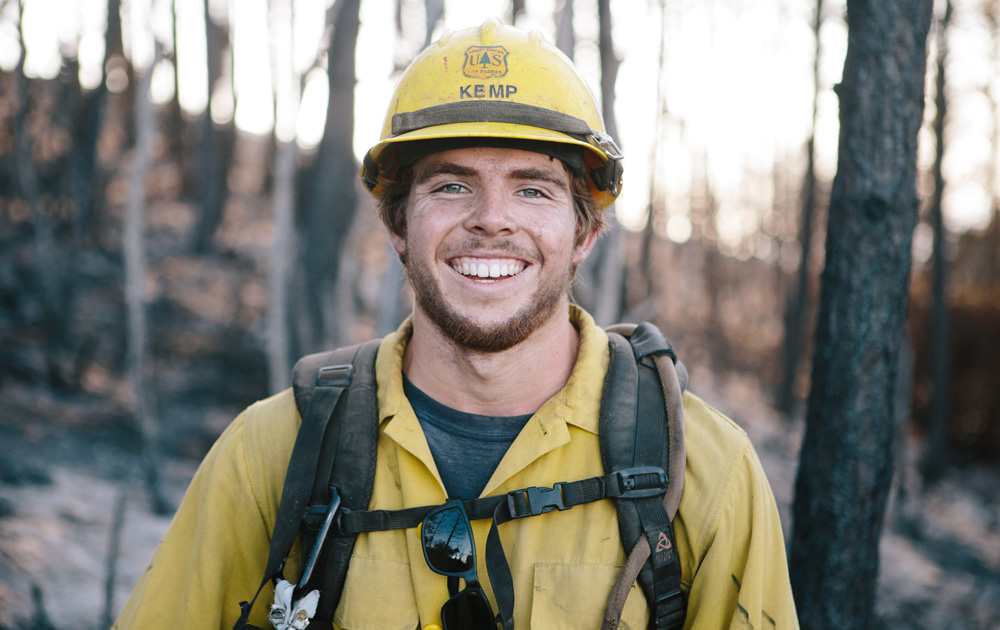
SPENCER KEMP
Student, Cal Poly SLO
Third Firefighting Season
What motivates him: Thinking about the people that I care about motivates me to be great. I always remember the purpose of a task we are doing and how it will better the environment and safety for the public.
Best day: Cutting
hot line all day, then eating spaghetti and meatballs back at fire camp.
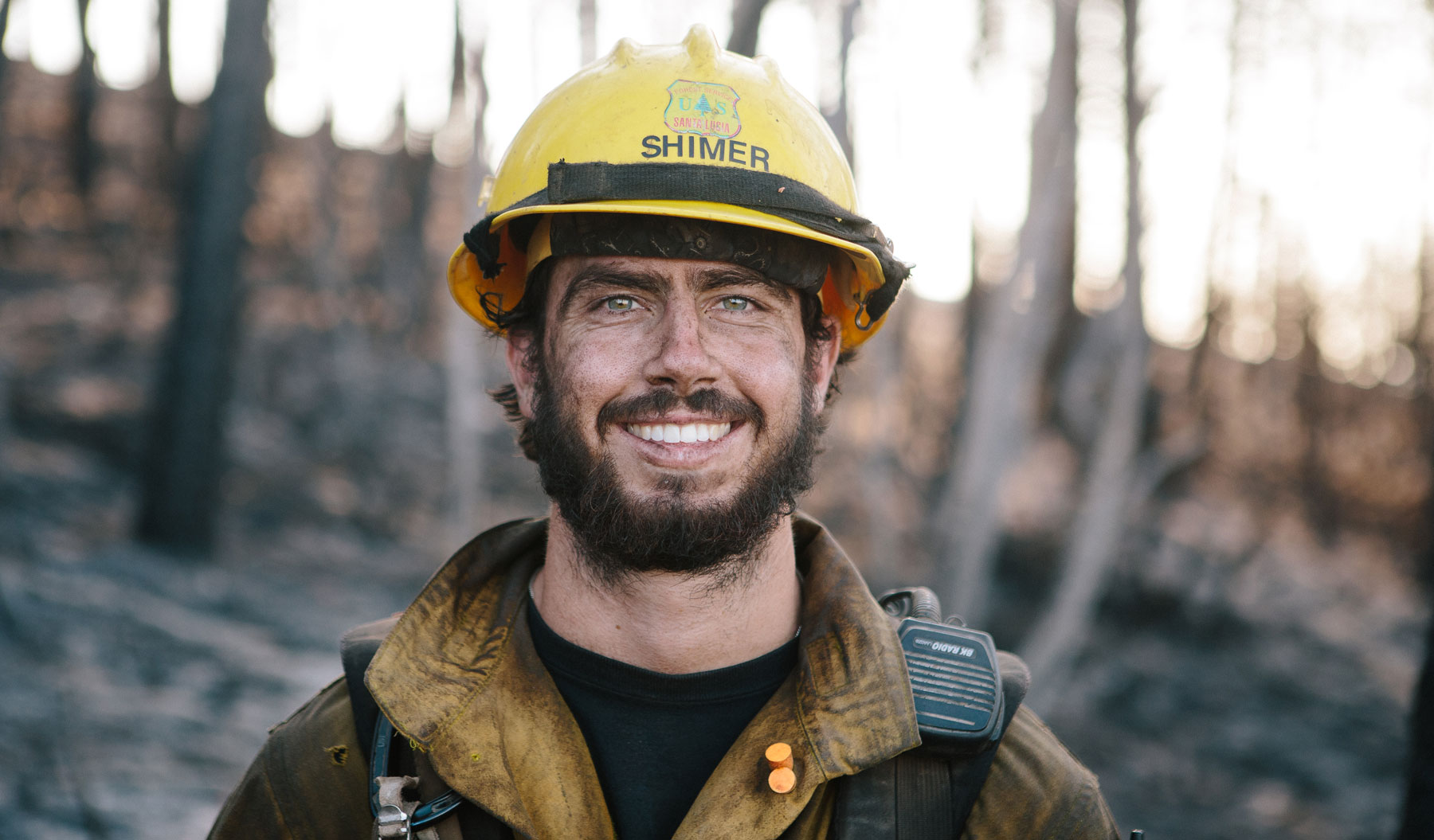
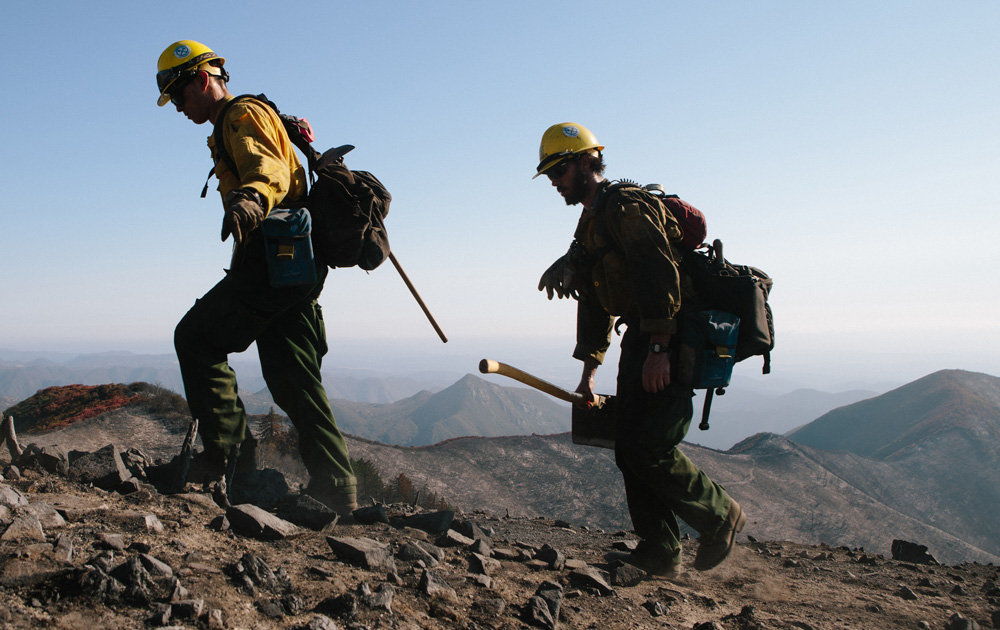
As the foot soldiers of wildland firefighting, handcrews must travel on foot for miles with heavy gear. Tremendous physical endurance is an essential part of the job.
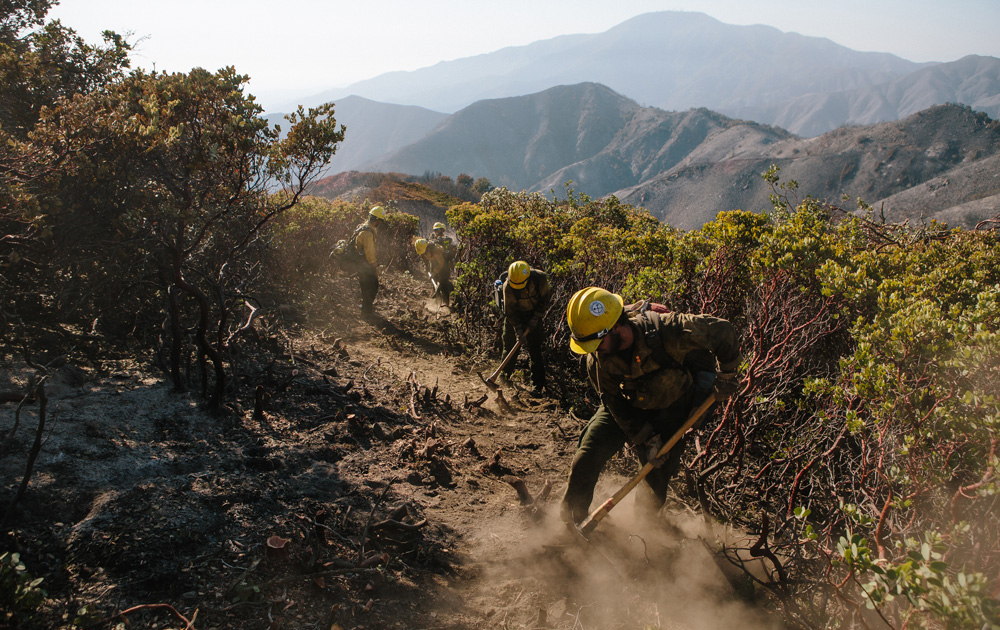
Crews clear flammable brush and dig firelines, creating a border that will keep a fire from spreading. When this line is close to the actual fire, it's called a "hot line" or "direct line."
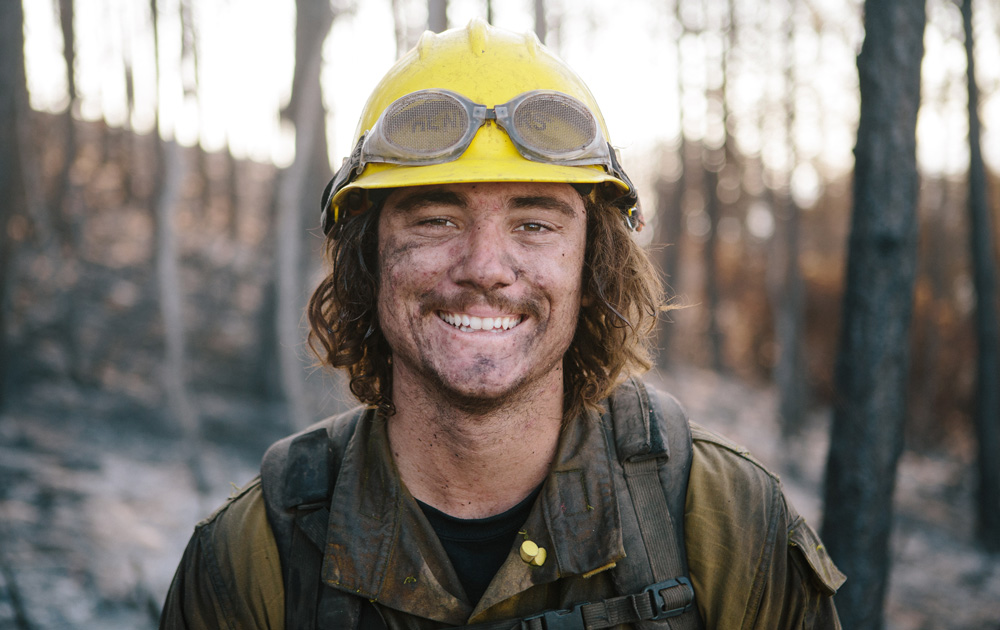
NICK HENDRICKS
Student, Cal Poly SLO
First Firefighting Season
Why he does it: Growing up in Southern California, I have memories of wildland fires affecting me and my community from a young age. This job seemed like a way where I could take an active role rather than just be a bystander. There was also a sense of thrill knowing I could combine a job and my love for the outdoors together. It's exciting going to work knowing you could end up sleeping in some national forest you've always wanted to visit.
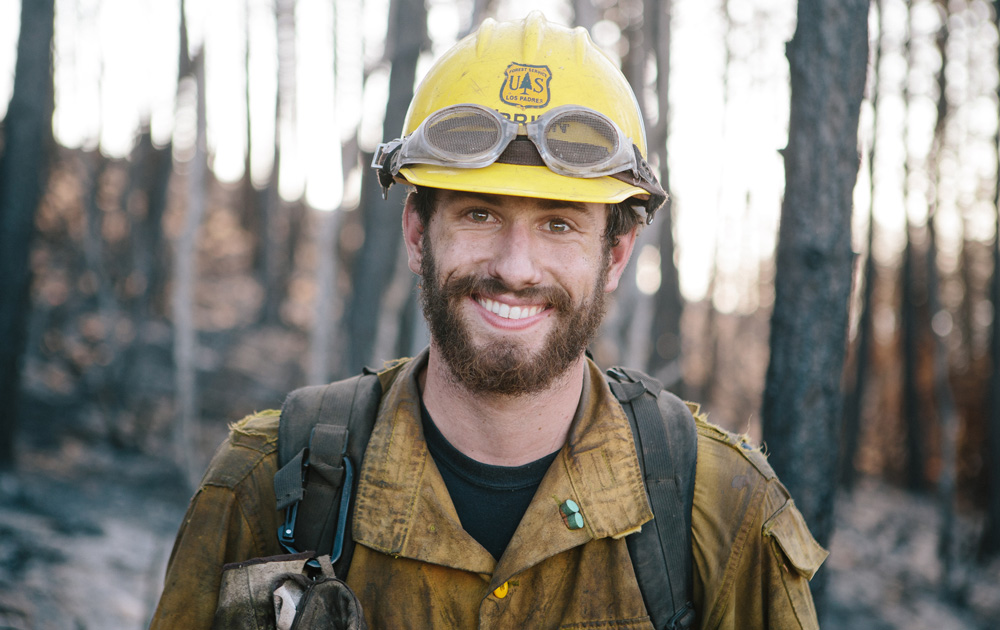
TYLER O’BRIEN
Alumnus, Cal Poly SLO (’17)
First Firefighting Season
Best day: The first day of cutting hot line along the fire’s edge. I am a puller so I was swamping the brush as it was being cut and throwing it out of the way. I love the feeling you get after a hard shift of work knowing you pushed yourself right up to the edge of your breaking point.
Favorite meal: My favorite meal at a fire is scarfing beef fritters with gravy, mashed potatoes, green beans, salad, chocolate milk and apple pie.
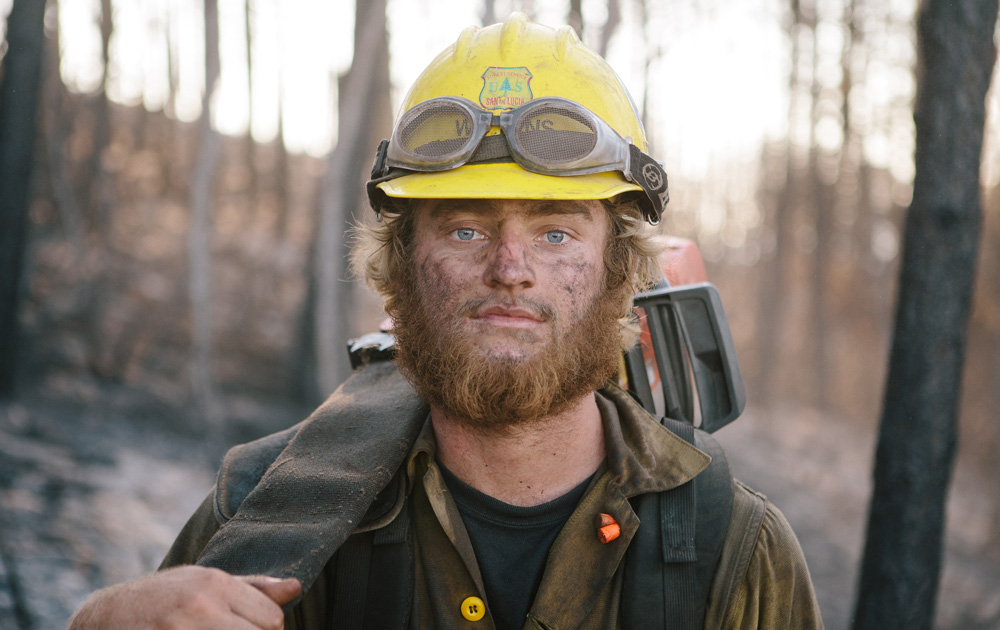
CHARLES WATKINS
Student, Cal Poly SLO
Second Firefighting Season
Best day: On a fire in the Klamath National Forest, the crew and I worked all day keeping it from crossing over into a valley filled with homes.
Favorite meal: Whenever fire camp has spaghetti and meatballs for dinner. And don’t forget the chocolate milk!
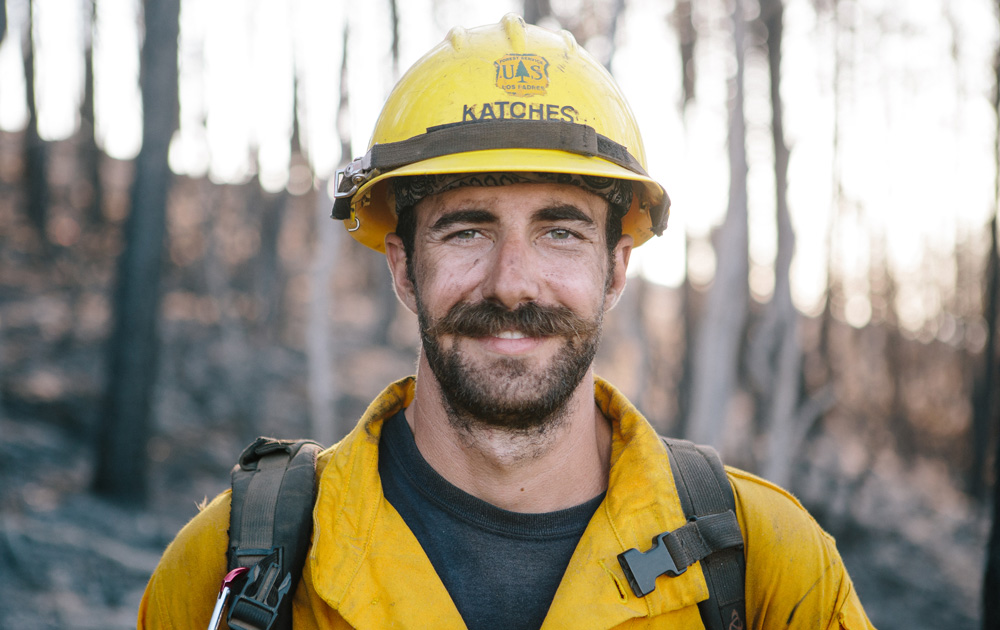
CALEB KATCHES
Student, Cal Poly SLO
Second Firefighting season
Why he does it: To gain fire experience and to learn more about wildland fire as it pertains to my major.
What motivates him: The difficult parts of the job build character and can always be used as personal learning experiences.
Best day: Hanging out with the crew after a long, strenuous shift, all of us being exhausted but proud of our efforts.
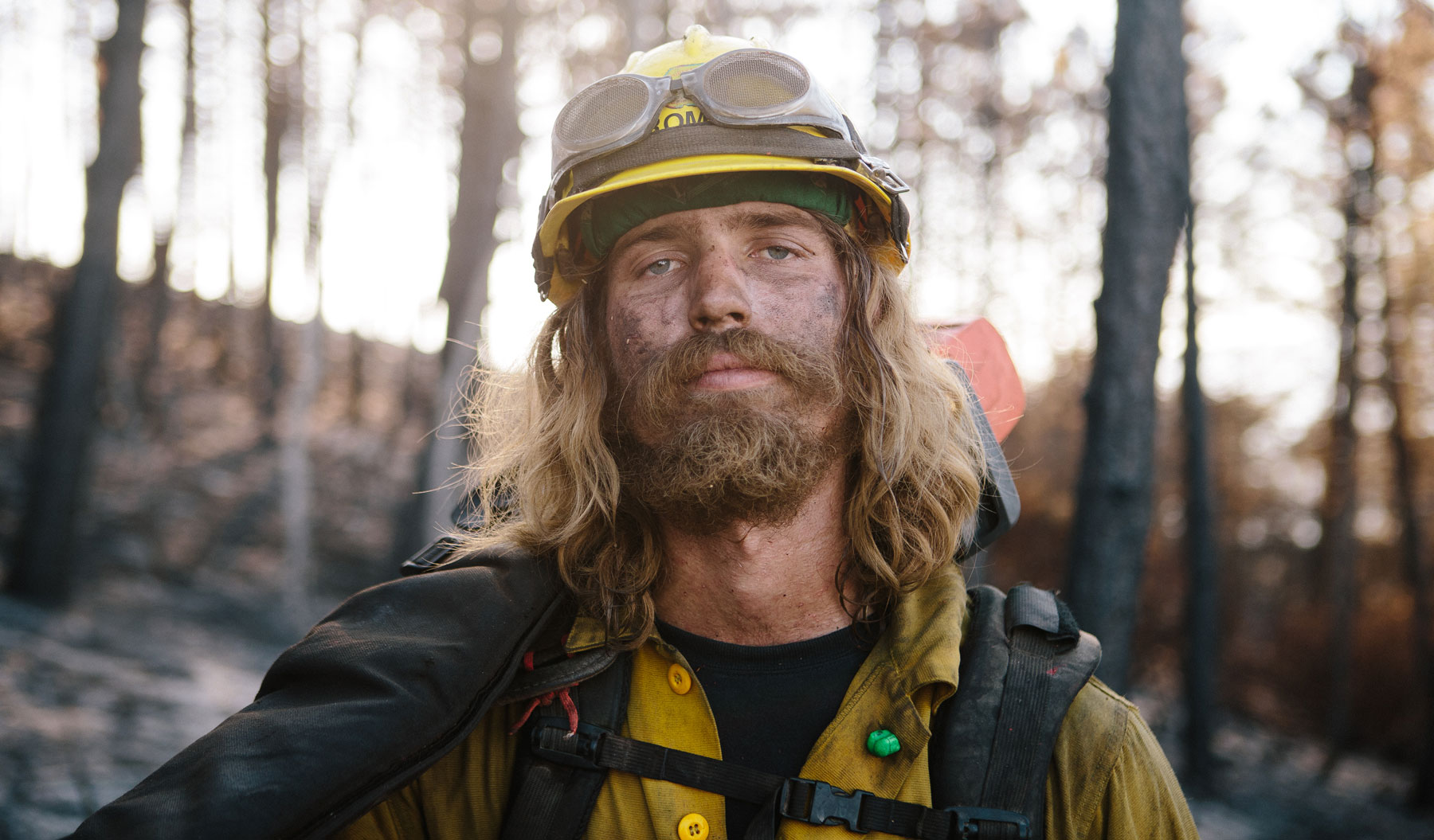
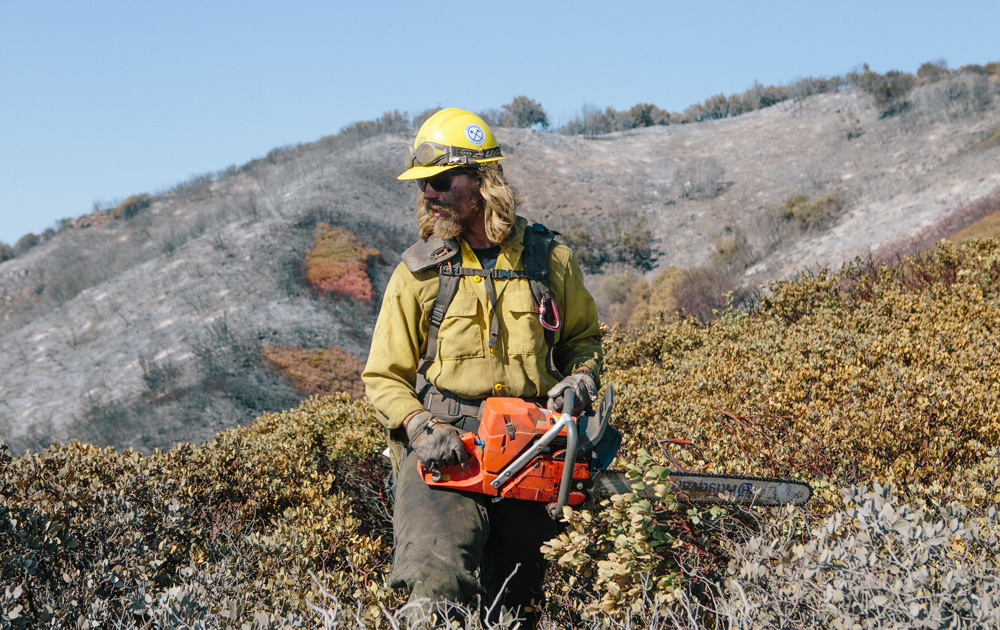
The crew uses several different types of handtools. The chainsaw is by far their favorite, thanks to its power and ability to swiftly cut away brush.
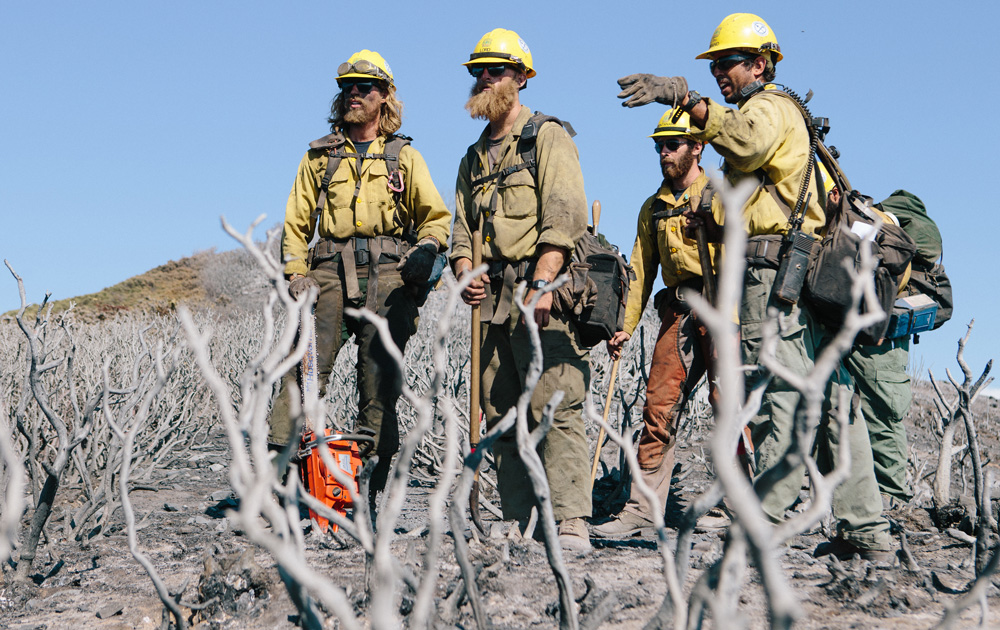
To suppress a large wildfire, Crew 7 often works in tandem with other crews and agencies, from engine crews to more advanced hot shot handcrews.
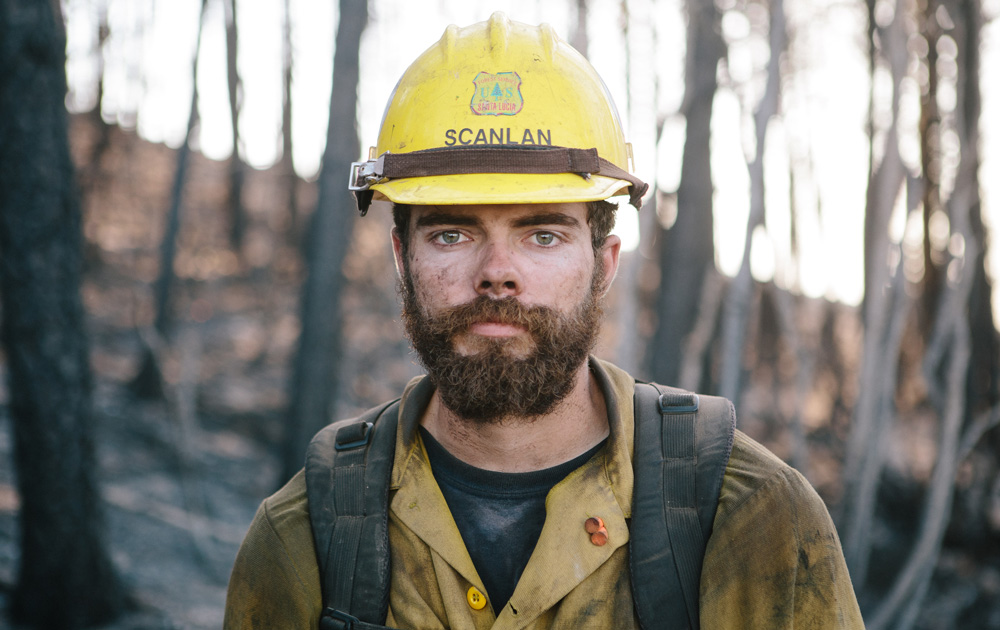
SHANE SCANLAN
Alumnus, Cal Poly SLO (’18)
Second Firefighting Season
What motivates him: Just knowing that there are other people in the same situation or often worse situations/conditions. In our case, there are probably other crews who have been on the fire longer, cut more line and had more difficult assignments.
Best day: Our first day on the Ogilvy Fire. We drove in for three hours on a Jeep trail and got to start work as the sun went down. It was a great experience for me to get to work with some smokejumpers out of Redding.
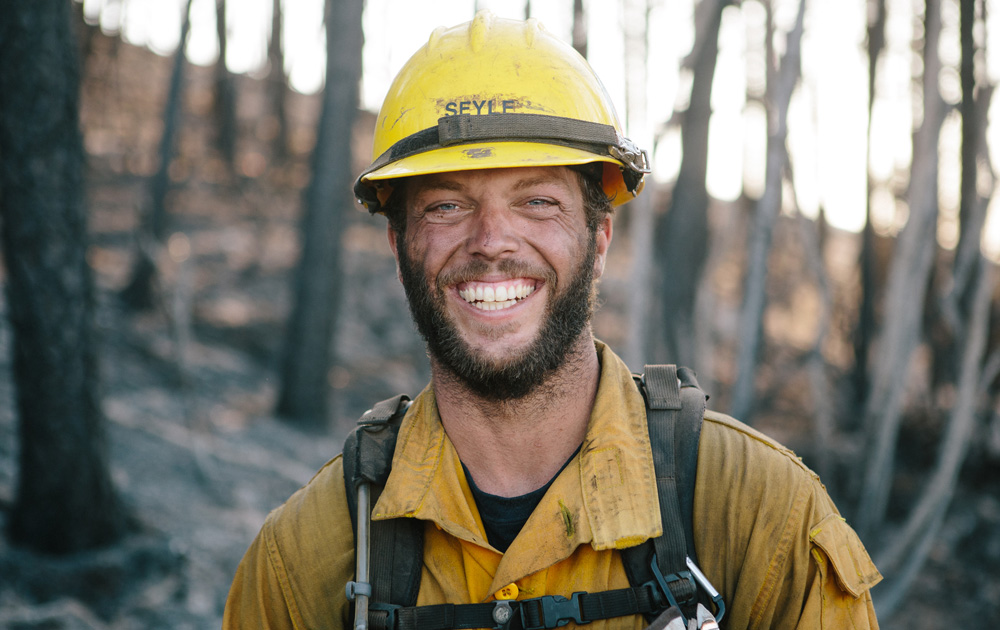
CHRIS SEYLE
Alumnus, Humboldt State (’15)
First Firefighting Season
Why he joined: I truly enjoy hard work and the outdoors, so this seemed like the right path to take to get involved with firefighting.
Best day: A full day’s work, soaked in sweat, dirt on our faces, and everyone is still laughing.

MORGAN MOORE
Alumnus, Cal Poly SLO (’18)
First Firefighting Season
Best day: I wake up without poison oak and after breakfast we get a nice mile hike in to work. Work is hard but we get a nice lunch break where I enjoy a roast beef sandwich with cream cheese and pepperoncini. We finish working and there is no hike out. Dinner is delicious with some ice cream to boot, and we’re done by 8 p.m.
Favorite meal: Honestly, I love when we get to crack an MRE (meal, ready-to-eat). Just the thought of opening food that could have been packaged a decade ago makes it taste better.
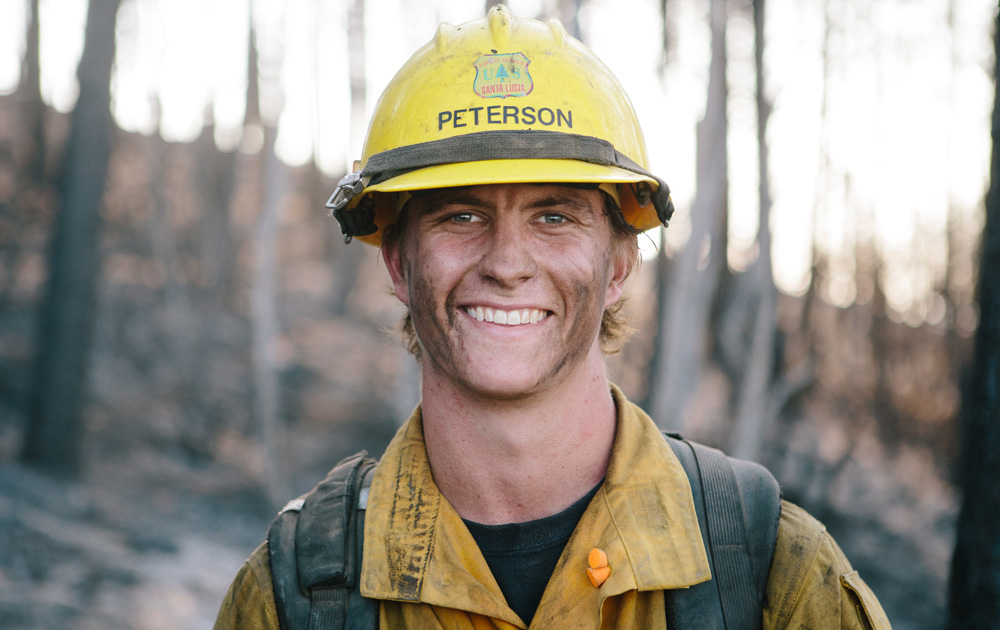
CODY PETERSON
Student, Cal Poly SLO
First Firefighting Season
Why he joined: I am pursuing a career in the fire service and this crew was a great way to obtain fire experience while also finishing my bachelor’s degree.
What motivates him: Thinking about my current and future family keeps me motivated to keep going.
Best day: The first day on the Holy Fire where we had the opportunity to cut hot line and tie in with a hotshot crew.
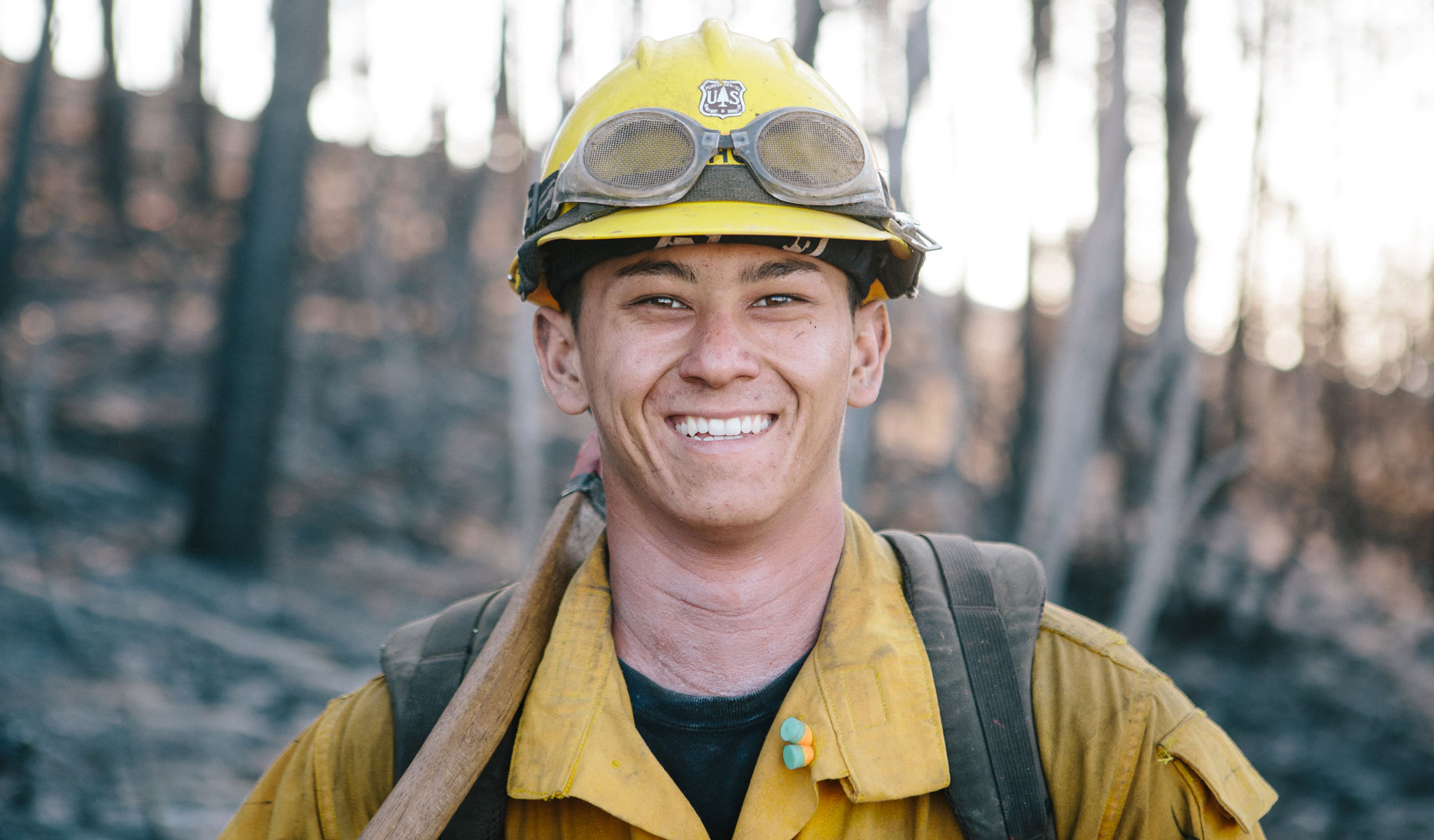

JASON MITCHELL
Crew 7 Supervisor
I enjoy seeing my new firefighters accomplish something they didn’t think was possible. It could be something as simple as hiking to the top of a ridge or receiving a promotion. Their success reflects on me.
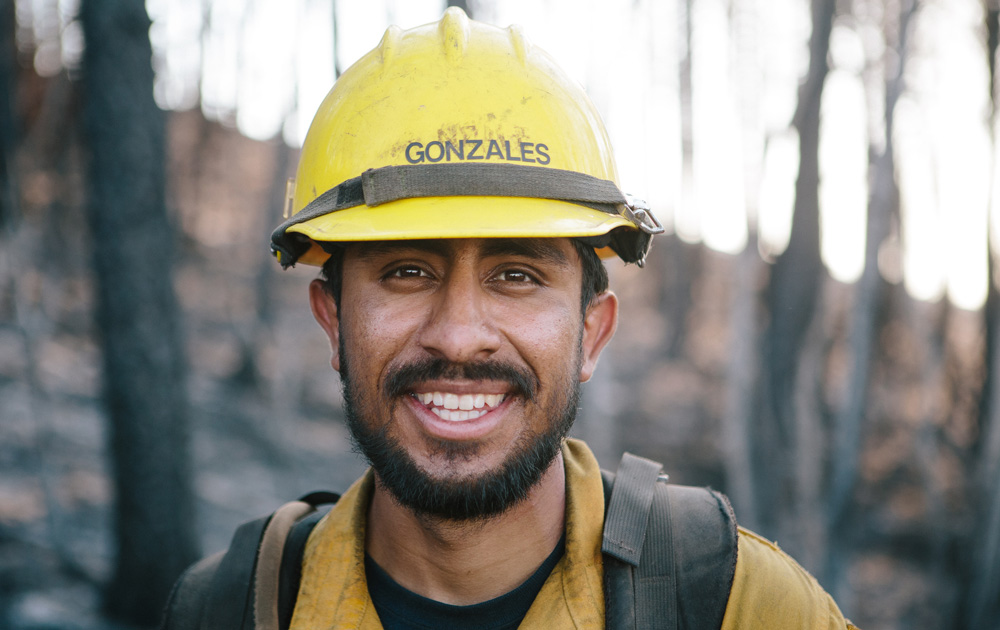
JOEY GONZALES
First Firefighting Season
I wanted to be a part of something that is bigger than myself. I enjoy the physical and mental challenges that come with this career.
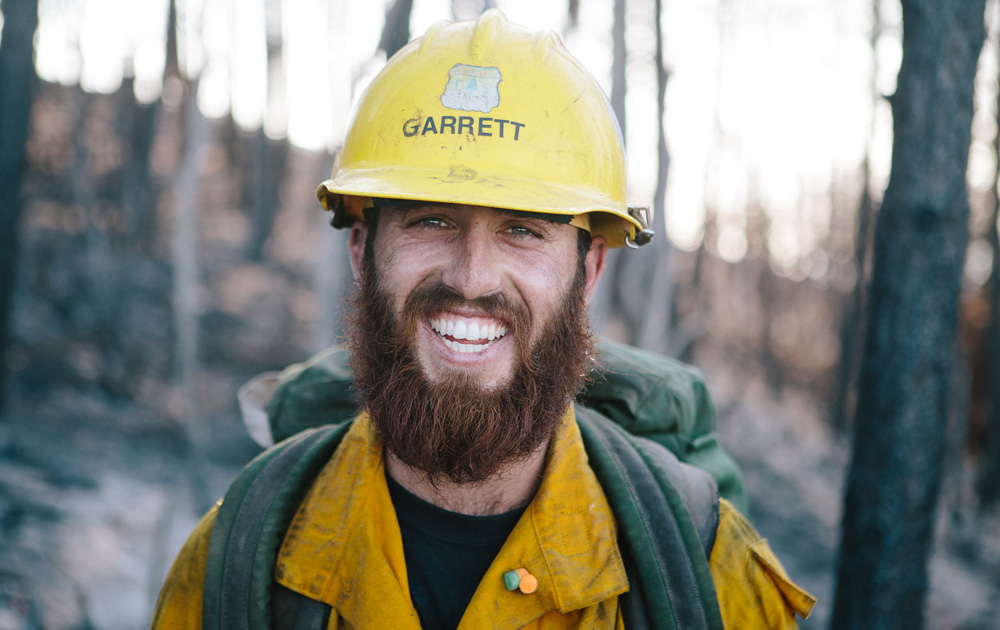
MICHAEL GARRETT
Second Firefighting Season
A friend used to say, ‘You will always think you could have pushed harder once you reach the top of the hill.’

COLE WILSON
Second Firefighting Season
My best day was showing up to the Holy Fire and spending the day cutting hot line in rough terrain.
This article is the second in a
series on the California State University's role in understanding, preventing and fighting California's devastating wildfires. Read our previous coverage on the CSU’s role in understanding fire to better predict and prevent it.
The next story in our series coming later this month, will introduce you to Tenaya Wood, a Humboldt State student who grew up in a firefighting family.
Story: Hazel Kelly
photoGRAPHY: PATRICK RECORD
Share this story